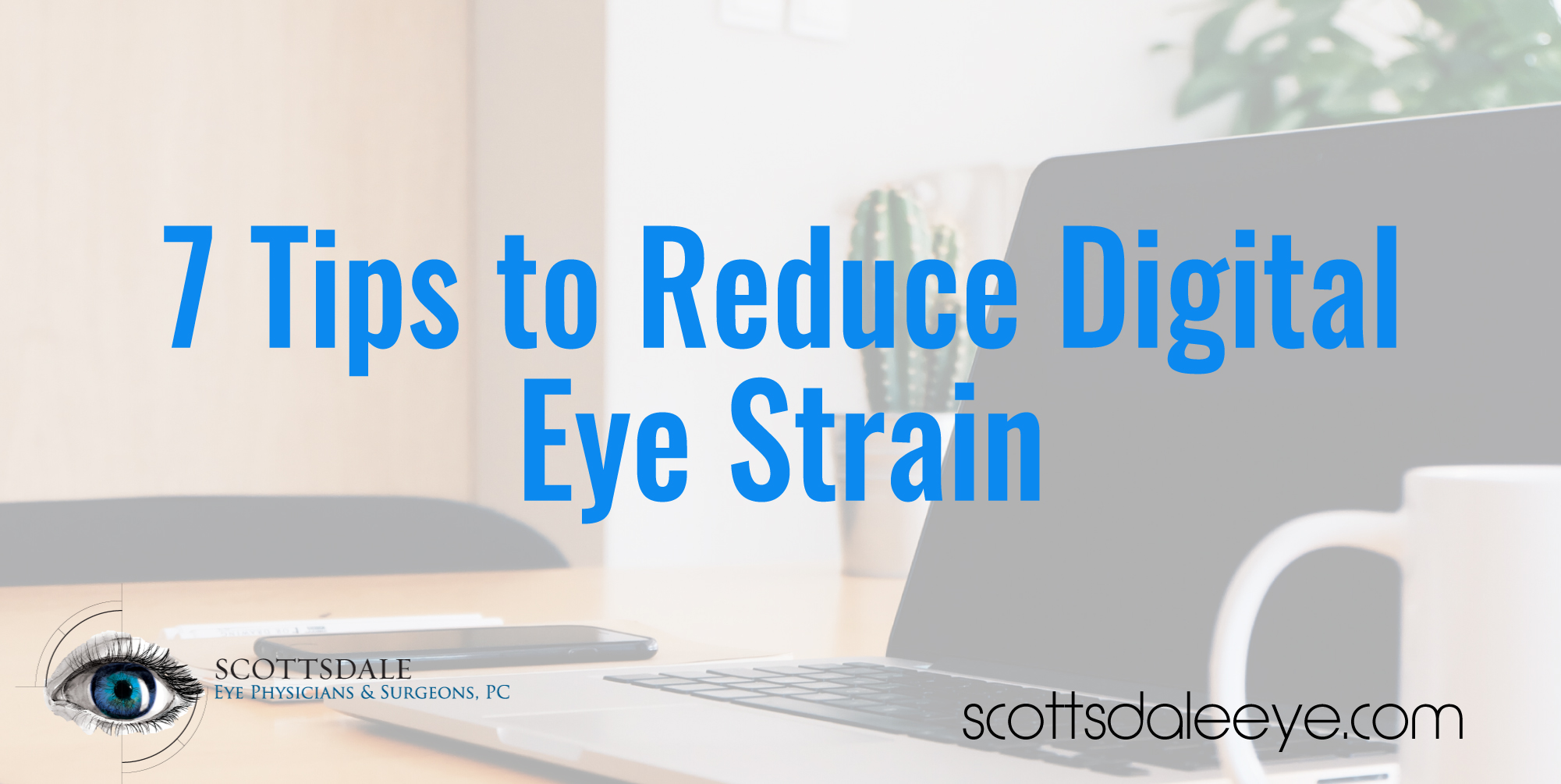Computers, Digital Devices, and Eye Strain
Eye Strain If you spend hours a day staring at a screen, there are different symptoms you can experience of digital eye strain including: blurry vision, achy or tired eyes, dry eyes, and may even sting or tear. Thankfully, there are many things you can do to help relieve eye strain.
7 Tips on How to Reduce Eye Strain:
1. Blink
Studies show that we blink 3 times less when staring at a computer screen, which is your eye’s way of getting moisture so it is important to be conscious of making an effort to blink so your eyes don’t dry out.
2. Add Moisture
Use artificial tears to refresh your eyes or consider a humidifier if the room is especially dry.
3. 20-20-20 Rule
Take regular breaks every 20 minutes, shift your eyes to look at an object 20 ft away for 20 seconds.
4. Use Computer Glasses
You might find these prescription glasses handy if you work on a computer for many hours at a time, they also help you’re ability to focus at computer screen distance. (20-26 inches away)
5. Adjust Brightness and Contrast
Adjust your screen brightness to match the level of light around you or increase the contrast on your screen to reduce eye strain.
6. Reduce the Glare
Try using a matte screen filter to cut glare,
7.Adjust Your Position
When using a computer, you should be sitting about 25 inches (arms length) from the screen. Also, position the screen slightly downward. Not straight ahead or up.
Contact Lens Users:
People who wear contact lenses and use digital devices may experience dry eye as an ongoing problem. Some tips include: Give your eyes a break by wearing glasses, don’t sleep in your contact lenses (even if labeled as extended wear), and always use good contact lens cleansing practices.
Screen Use for Kids
There are many reasons to be weary of screen time allowed to children. Amount of use has been associated with developmental outcomes, obesity, poor sleep quality, and eye development. The WHO suggests no screen time at all for children under 2, and very limited time for several years after. Parents should be made aware of the possible effects of screen use on children’s eyes.
Myopia (Nearsightedness)
The number of people developing nearsightedness in the US has nearly double since 1971. A 2019 study in Ophthalmology offers more evidence that at least part of this increase has to do with near work activities. The study suggests spending time outdoors especially in early development can slow the progression of nearsightedness.
Sleep Disruption
Screen use too close to bedtime can harm sleep quality. And sleep is one of the biggest factors that the WHO declares important for healthy child development. This is an easy practice of not using blue light before bedtime.
Set Good Habits
The best way to deal with possible effects of eye strain on children is to help set good habits for them to use. These same practices go for people of all ages. Using the 20-20-20 rule and setting a timer, making bookmarks, or after a video game encouraging kids to look up and out the window. As well as, using good posture, holding your screen farther away (18-24 in), or reminding them to blink when watching a screen are just a few things you can do to help your kid set healthy habits.
Blue Light
Although there is no evidence suggesting blue light from devices causes damage to your eye, it can affect your sleep cycle. Blue light can stimulate your brain and make it harder to get sleep.
It is recommended that you limit your screen time 2-3 hours before bed.
Protecting your Eyes Using the 20-20-20 rule or artificial tears when your eyes feel dry are the best ways to protect your eye from eye strain. The American Academy of Ophthalmology does not recommend blue light glasses because of lack of evidence of effectiveness.
NIGHT MODE
Night mode is a setting offered on many digital devices that changes the predominantly white background with darker colors to decrease strain on your eye. Switching to night mode a few hours before bed can reduce the contrast between the screen and dark room and help your eyes decompress before going to bed.
Boyd, Kierstan “Computers, Digital Devices and Eye Strain.” American Academy of Ophthalmology, 4 Mar. 2020, www.aao.org/eye-health/tips-prevention

